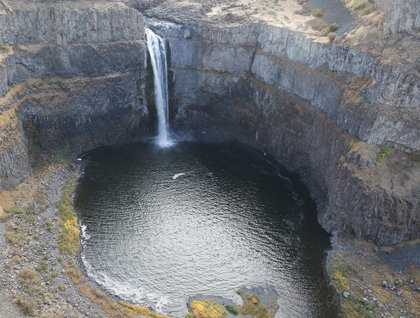Palouse…what is this oddly named place? For one thing, it is an excellent place to witness the awesome power of nature. The origin of the name is unclear. It may be derived from the local Palus Indians. Or French trappers referred to the short grass covered hills as pelouse. In any case, the dramatic desert country is known as the Palouse and the beautiful spotted horses bred by the natives are now known as appaloosas.
Before the Pleistocene, the ancestral Palouse River was farther north and paralleling the Snake River before emptying directly into the Columbia River. But then came the floods. Stupendous floods. Not one, not two, but perhaps 100 of them. Where did all this water come from? From the giant continental glacier grinding away in Canada, a tongue of ice 2,000 feet thick dammed the Clark’s Fork River. Eventually a huge lake formed (Glacial Lake Missoula) but the ice dam became unstable and catastrophically collapsed releasing a flood of biblical proportions. The flood waters overtopped the ancestral Palouse valley and found a route to the Snake River. Racing water and ice scoured the land, ripping away blocks of basalt, sweeping up the soil and creating the scablands and the stunning Palouse Canyon and leaving the Palouse River’s old course abandoned and dry.
Upon returning to the ship, we watched a film about the Ice Age Floods, which helped clarify these geologic events. Then it was time to enjoy a barbecue lunch on the upper deck in the warm sunshine.
Afterwards, we soon approached Lower Monumental Dam and Lock, where Captain Nettles deftly maneuvered the National Geographic Sea Lion alongside a huge barge carrying wheat with its attendant tugboat.
Later in the day, historian Jim Rawls presented In the Wake of Lewis and Clark, an informative overview of the Corps of Discovery and after dinner, a very entertaining talk about Sam Hill, his women, and the Maryhill Museum, which we will visit tomorrow.







